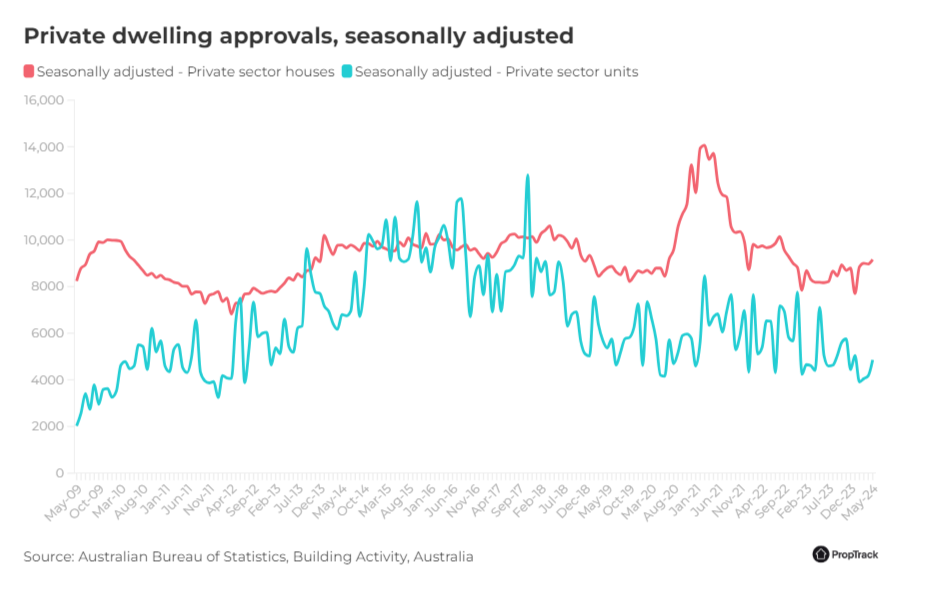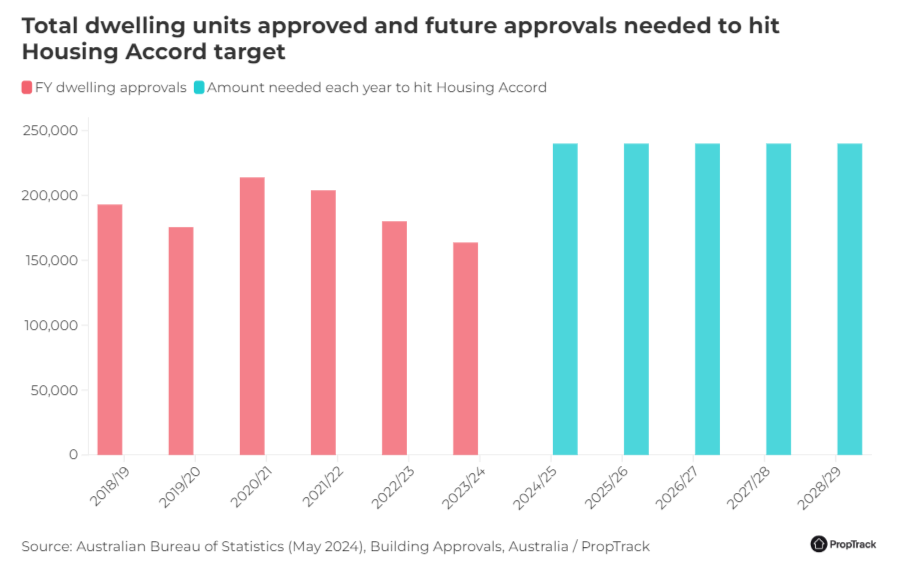

State governments have begun rolling out their home building plans to contribute to the Australian government’s ambitious Housing Accord target of constructing 1.2 million new, well-located homes by mid-2029, PropTrack reported.
The Housing Accord, which kicked off on July 1, has spurred states and territories to accelerate home building efforts over the next five years.
The NSW government recently announced the release of three land parcels for nearly 700 affordable and social housing units.
In its recent budget, the state pledged to construct up to 30,000 homes in prime locations near key infrastructure and transport over the next four years.
The first land parcel in North Eveleigh will accommodate 500 properties, with half designated as social and affordable homes. Other sites in Kellyville, Campden, and Camperdown are still awaiting firm project commencement dates.
See LinkedIn post here.
Other states are also setting significant housing goals.
The Victorian government plans to build 2.5 million homes by 2051, including 140,000 in Geelong and 134,000 in the Melbourne City Council area.
Meanwhile, the Queensland government aims to build 1 million quality homes by 2026, with 95% of these delivered by the private sector.
“Despite these ambitious plans, the number of new developments approved monthly over the past year falls short of what is needed to meet the Housing Accord target,” PropTrack’s Karen Dellow (pictured above) said.
Over the 12 months to May, there were 164,000 total dwelling approvals, which is significantly below the 240,000 needed annually. At this rate, only 820,000 new dwellings would be built by 2029.
There was a 16.3% increase in apartment approvals during the month, which is crucial for boosting housing stock nationwide. New house approvals also rose but only by 2.1%.
Several factors are slowing down new home construction, including industrial relations laws, a lack of critical infrastructure, and high developer taxes and charges.
However, the most significant challenge is the shortage of skilled labour.
Build Skills Australia estimated an immediate need for 90,000 new tradespeople, with an additional 500,000 required over the next five years to meet the Housing Accord target.
Jobs and Skills Australia highlighted a shortage of tradespeople in all occupations. This skilled labor shortage, along with soaring construction material prices, hampers new home construction.
“Even with streamlined approval processes, the release of unused government land, and improvements to industrial relations laws, there aren’t enough workers to initiate projects,” Dellow said.
New dwelling commencements have been decreasing since June 2021, dropping about 15% in the December quarter of 2023 compared to the same period in 2022.

Additionally, there are fewer construction companies now, with nearly 3,000 fewer this financial year due to a record number of insolvencies, as reported by the ASIC. Many of the collapsed builders left projects unfinished.
According to ABS, there were 226,000 dwellings under construction as of December, a 23% increase from the low of 184,000 in September 2020.
However, whether new dwelling approvals will quickly translate into building commencements to meet the government’s target remains a challenge.

Currently, the construction industry cannot meet the demand for new dwellings necessary to achieve the Housing Accord’s goal.

The ongoing skilled labour shortage, high material costs, and industry insolvencies pose significant challenges. It remains to be seen if the target is realistic given the difficult conditions the industry has faced in recent years, PropTrack reported.
Get the hottest and freshest mortgage news delivered right into your inbox. Subscribe now to our FREE daily newsletter.
